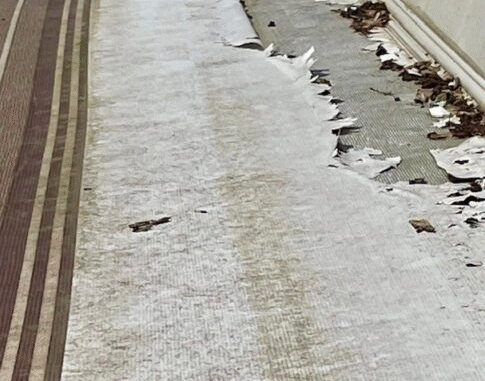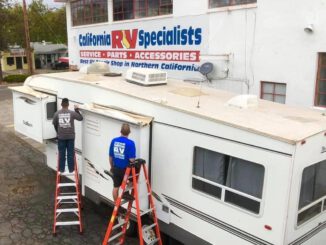
RV travel offers a unique way to explore, providing comfort and the freedom to journey at your own pace. An essential part of this mobile lifestyle is your RV awning, offering shade, protection, and extension of your living space into the great outdoors. However, without proper care, awnings can become vulnerable to damage from weather, sun exposure, and deteriorating stitching.

By Dustin Simpson – California RV Specialists – Lodi, California
Why Do RV Awnings Get Damaged?
Weather Impact: RV awnings are constantly exposed to various weather elements. Wind can cause tearing, heavy rain can result in water pooling, and snow can add weight, stressing the fabric. Frequent exposure to such conditions can lead to wear and tear over time.
Sun Damage: Constant sun exposure can cause the fabric to become brittle, peel, and eventually separate. The ultraviolet (UV) rays penetrate the material, breaking down the fibers and weakening the awning. This sun damage is not only a cosmetic issue but can lead to structural weaknesses.
Stitching Stress: Over time, the stitching holding the awning together can become compromised. This typically occurs due to a combination of sun damage, weather impact, and general wear and tear. Once stitching begins to give way, the fabric will likely start peeling or separating.
Best Practices for Maintaining Your RV Awning
1. Regular Inspections: Inspecting your awning every few months is crucial. Look for signs of stress, such as fraying or peeling. Special attention should be paid to high-stress areas like the stitching.
2. Apply UV Protection: A protective UV blocker, such as 303 Aerospace Protectant, can help in preventing sun damage. It’s advisable to apply this product every 4-6 weeks, depending on the amount of sun exposure. These products are designed to create a protective layer over the fabric, reducing the impact of UV rays.
3. Proper Use and Storage: Always ensure your awning is fully retracted when not in use, especially during severe weather conditions. Also, make sure it’s dry before storage to prevent mildew or rot.
4. Cleaning Routine: Regular cleaning with mild soap and water can preserve your awning’s condition. Avoid using harsh chemicals, as they might weaken the fabric over time.
When Repair Isn’t Possible
Despite your best efforts, sometimes damage becomes too extensive for repair. An RV owner shared pictures questioning the repairability of their awning, which had succumbed to rot. Unfortunately, once rot sets in, repair is often not an option, necessitating a replacement.

An awning is both a functional and aesthetic component of your RV. By following these tips and being proactive with maintenance, you can extend the life of your awning significantly, ensuring it provides comfort and protection for many adventures to come. Happy RVing!
More from Dustin
Make sure you check out my website, California RV Specialists, and our YouTube channel for more helpful information, and other social media pages.
AFFILIATE DISCLOSURE
Some of the links on this page are affiliate links. If you choose to make a purchase using our links, we will earn a small commission – at no additional cost to you! Affiliate links help compensate us for our time and effort into providing this information FREE to you. Thank you for using these links.
SHOP WITH US!
Amazon Storefront
eBay Store

